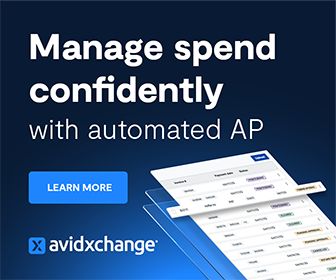As a controller, you are responsible for optimizing your organization’s financial resilience by taking a proactive approach and maintaining flexibility in volatile market conditions. To do that effectively, you’ll need to leverage predictive analytics technology.
For years, predictive analytics was a tool reserved for the largest organizations with the biggest IT budgets. Fortunately, the proliferation of robust technologies, including artificial intelligence and automation tools, has helped make predictive analytics far more accessible.
Whether you are already using this resource in your financial management workflow or are looking for ways to integrate it into your daily strategy, this guide is for you. It explores practical tips for using predictive analytics to enhance your financial forecasting, planning, and analysis (FP&A) processes.
The Basics: Predictive Analytics 101
Predictive analytics is a branch of data analytics that uses historical and current data to forecast future trends. By applying statistical algorithms, machine learning techniques, and data mining methods to large datasets, predictive analytics can uncover patterns, relationships, and insights that enable your business to make informed predictions.
Benefits of Predictive Analytics for Controllers
While predictive analytics technology has become much more accessible in recent years, implementing it into your FP&A workflow can still be a labor- and resource-intensive process. The question is, will all that work be worthwhile?
Absolutely. By investing in predictive analytics technology, you can unlock significant benefits for your business, including the following:
Improved Forecast Accuracy
Predictive analytics enables you to generate more accurate and reliable financial forecasts. The technology considers historical trends, market data, and internal performance metrics.
By incorporating predictive models into your FP&A processes, you can better anticipate changes in revenue, expenses, and cash flow. This will allow you to engage in more informed decision-making and resource allocation.
Enhanced Risk Management
Predictive analytics can help your team identify and mitigate potential risks before they have a major impact on the company’s bottom line. By analyzing historical data and market trends, you can identify early warning signs of financial distress, fraud, or market volatility.
In turn, these insights enable you to be more proactive with risk management. For instance, if your models suggest a major market downturn in the next six months, your organization can make necessary preparations, such as increasing cash reserves or scaling back production.
Better Resource Allocation
One of the main advantages of predictive analytics is its ability to guide your resource allocation strategy. You can identify areas of inefficiency or underperformance and make necessary changes to mitigate those shortcomings.
Improving your resource allocation practices can support the organization’s long-term goals. In addition, it helps to reduce waste and make the company more efficient overall.
Informed Decision-Making
Through predictive analytics, you can eliminate the guesswork from important financial decision-making processes. Using models and scenario analysis techniques allows you to evaluate the likely outcome of numerous strategic initiatives, investment opportunities, and business scenarios.
6 Tips for Implementing Predictive Analytics Into FP&A
If you are ready to integrate advanced modeling techniques into your FP&A workflow, you’ll need to do the following:
-
Define Your Objectives
First, decide your goals for integrating predictive modeling into your FP&A processes. After you’ve defined your big-picture aims, identify key performance indicators that your model will address. Common focus areas include cost optimization, risk management, and revenue forecasting.
-
Gather and Improve Data
Next, you’ll need high-quality data to feed into your model. Gather relevant financial data from internal and external sources, including historical financial statements, market data, and economic indicators. Cleanse and validate the information to ensure its accuracy.
-
Develop a Model
Develop predictive models and algorithms based on the selected objectives and key metrics. Alternatively, you can leverage out-of-the-box predictive analytics tools, which handle much of the model customization processes for you.
-
Evaluate and Validate the Results
Most models require some fine-tuning to yield accurate, reliable results. Evaluate the performance of your models using historical data and sampling techniques. Ensure that they are dependable enough to use in your decision-making processes.
-
Integrate and Deploy Your Model
Next, integrate your model into your FP&A processes and systems. You’ll need to link it to your financial planning software or enterprise resource planning solutions.
-
Continually Improve
To get the most out of your new technology investment, it’s important to continually refine and improve the software. Most importantly, be diligent when performing data management and optimization. The garbage in, garbage out rule applies to predictive modeling. In other words, if you are using junk data, you’ll receive unreliable results.
Ready to Embrace Predictive Analytics?
By leveraging predictive models and a data-first approach to decision-making, you can access highly accurate forecasts and insulate your organization from risks. Following established best practices for implementing predictive analytics in your FP&A processes allows you to unlock valuable insights and drive your business toward its financial goals.




